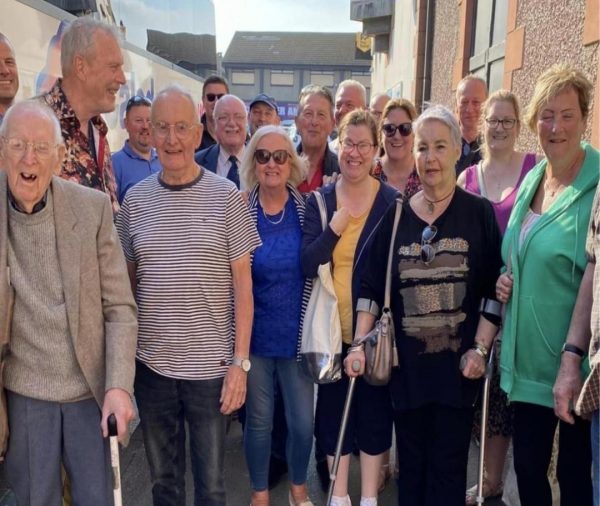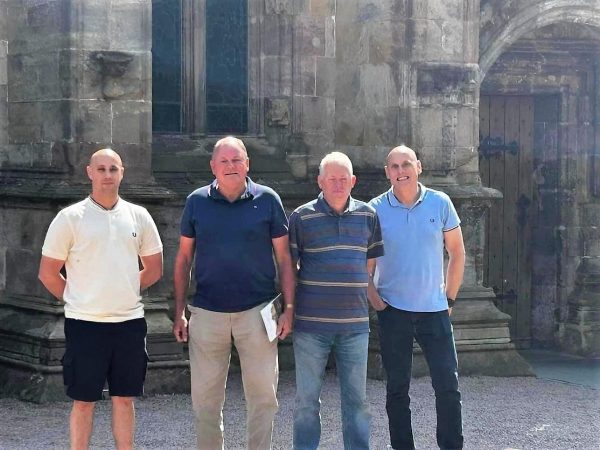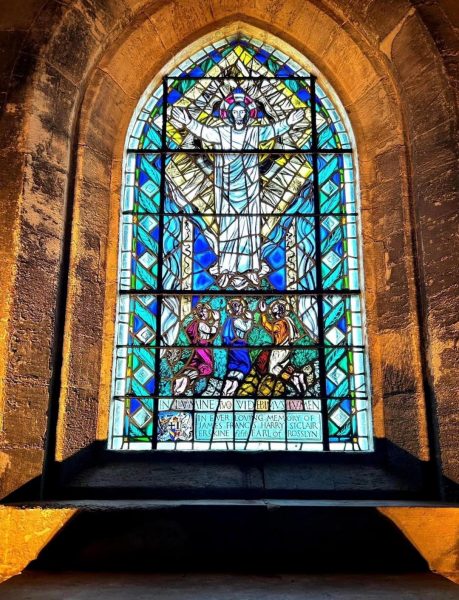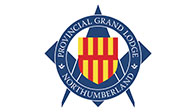
The Light Blues Club of Northumberland recently joined the brethren, family and friends of St Hilda Lodge No.240, from the Provincial Grand Lodge of Durham, on their visit Rosslyn Chapel, organised by Michael McDowell, the current Master of the Lodge. Wilf Crawford, of Tyne Lodge No.991, drove the coach to Rosslyn, ensuring that no one was missed on the way up, where the group were met by members of Rosslyn St Clair Lodge No.606, who served their visitors a light lunch and gave a presentation on Rosslyn Chapel.
Although the talk was very informative, it did not answer the question of the connection with masonry and although the Chapel has many masonic signs, these do not necessarily mean that there is a masonic background. The presenting Brother was open about this, and this is also an open question from literature
The visit to the Chapel was enjoyable, and the presentation by the Caretaker of the building revealed many hidden sculptures. The building contains many signs, and a repeat visit is undoubtedly worth the time spent.
During the trip a charitable collection was made to the tune of £153, on behalf of the annual childrens party, organised by St Hilda Lodge. Masonry is about charity, and those attending showed their generosity!
Rosslyn Chapel was founded in 1446 by Sir William St Clair as a place of worship and services continue to be held here weekly. The beauty of its setting, in rural Midlothian, and the mysterious symbolism of its ornate stonework have inspired, attracted and intrigued writers, artists and visitors ever since.
The Chapel has also been a popular destination for visitors for generations and by the late 18th-century, it was starting to appear on itineraries and its profile greatly increased after the publication of Dan Brown’s novel, The Da Vinci Code, in 2003, and the subsequent film. After filming, Tom Hanks said: ‘Few locations in film are so delightful and few destinations live up to their billing, but Rosslyn Chapel was all one could imagine or hope for.’
Rosslyn Chapel Trust was established in 1995 to care for the Chapel and oversee its conservation and public access, when a report confirmed that damage was occurring and that humidity in the Chapel was very high..
The building was incomplete when the founder, Sir William St Clair, died in 1484, and his son, Sir Oliver St Clair, roofed the choir with its stone vault but did not complete his father’s original design. Following the Reformation, the Chapel fell into disrepair and, in 1650, Cromwell’s troops attacked Rosslyn Castle and stabled their horses inside the Chapel.
Following a period of Victorian repair and restoration, the Chapel was rededicated in 1862 and weekly services began again. A report in 1954 highlighted the poor condition of the stonework and the thinking of the time was to cover the historic stonework with a cementitious slurry.
The St Clair family’s connection with this part of Scotland extends back to 1070 and are descendants of Rognvald ‘the Mighty’, Jarl of Orkney and Romsdahal in Norway, who was born in 835AD. His son, Rollo, signed a peace treaty in 912 with King Charles of France in the town of St Clair-sur-Epte, from where the family takes its name.
The family was given land in Scotland by King Malcolm Canmore and the barony of Rosslyn was established. Throughout the generations, the family a strong presence in Orkney, Caithness and Fife and a number of castles were built for them, or acquired by them, in those areas.
The Chapel continues to be owned by the family and, today many people across the world bearing the surname of St Clair, or Sinclair, come together in the activities of the Clan.
We wish to congratulate Michael and Wilf for their effort to make this visit a success. All participants enjoyed the trip, we made new acquaintances and friends, and we look forward to the next adventure!
If you have a story, event, or news item that you would like to share, please email the Provincial Communications Team at news@northumberlandmasons.org.uk
With thanks to the Provincial Grand Lodge of Durham for the photographs.




